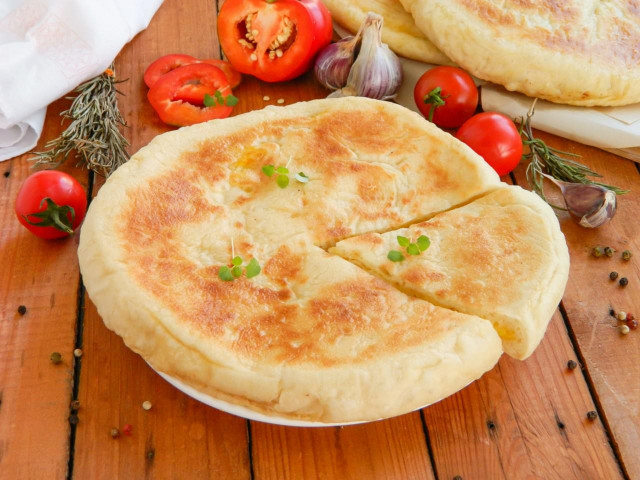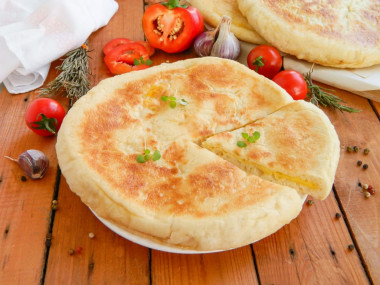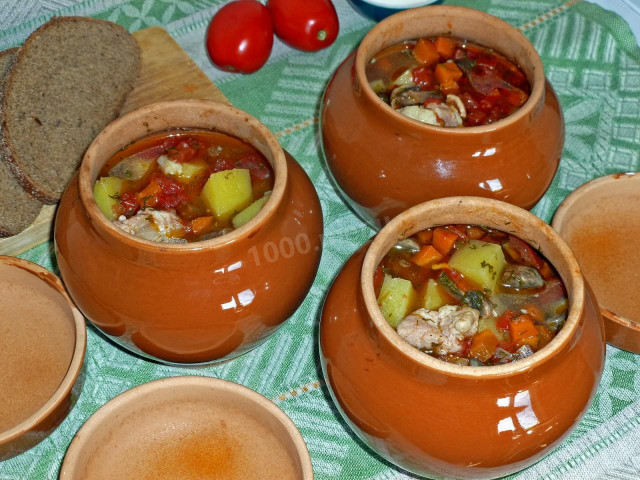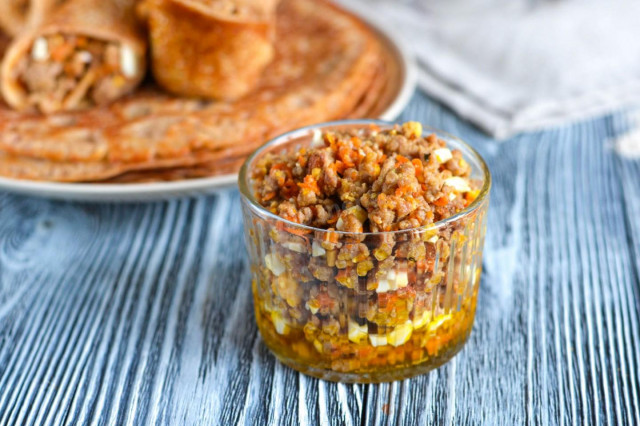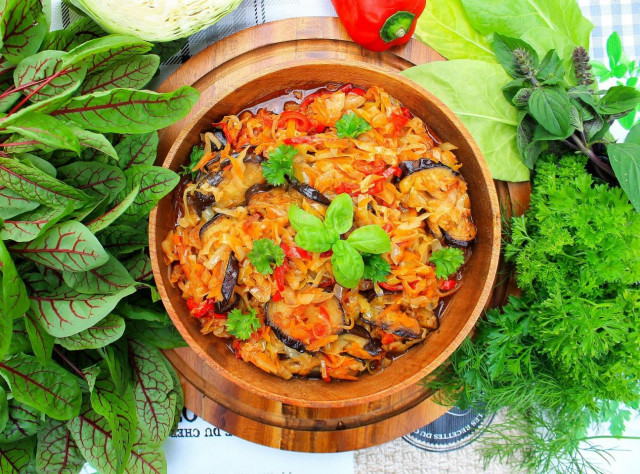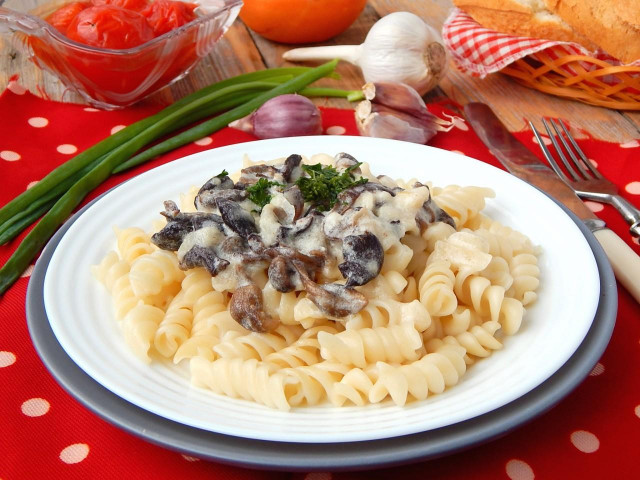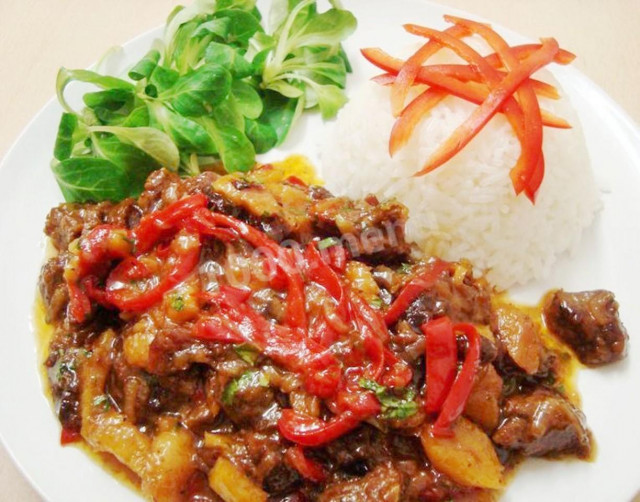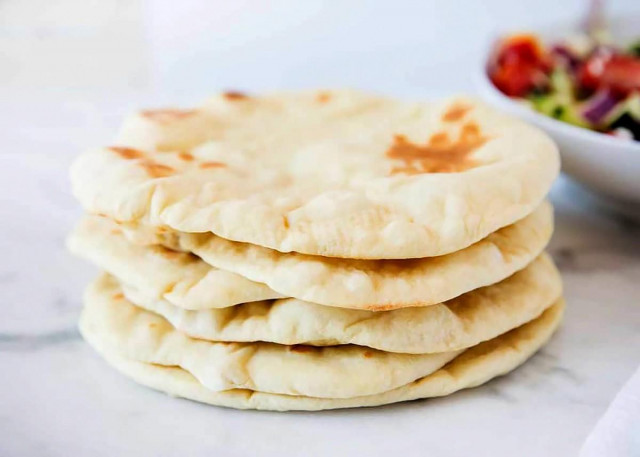Composition / ingredients
Step-by-step cooking
Step 1:
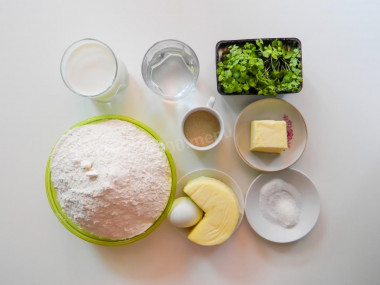
How to make an Ossetian pie? Prepare all ingredients. Take the flour of the highest grade. Egg - C1. Milk and egg an hour before cooking, remove from the refrigerator. For a more successful baking, the ingredients should be at room temperature. Before using yeast, read the instructions for them. Some yeast must be activated by first dissolving in warm water, and some can be immediately added to flour. Choose the ones that need to be activated.
Step 2:
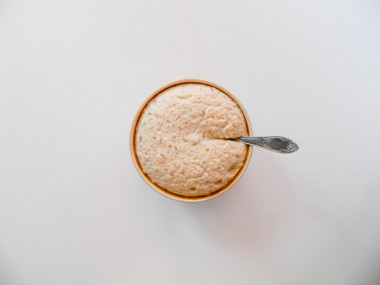
In a separate container, heat the water to a temperature of 37-40 degrees. Add sugar and yeast to the water. Stir until the sugar is completely dissolved.
Step 3:
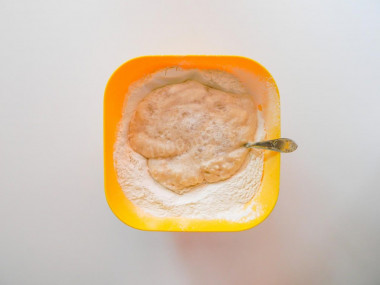
To knead the dough, take a deep bowl in which it will be convenient to mix dry and liquid ingredients. Sift half of the required amount of flour into a bowl to sift out small debris and the dough is saturated with oxygen. Sift the remaining flour into a separate container. When the yeast has a lush foam, pour them into the recess in the flour. Add milk and salt. Knead the dough.
Step 4:
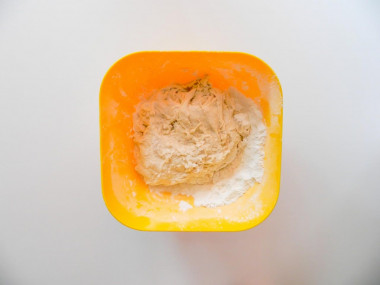
To get the desired consistency, add flour in small portions. When it becomes difficult to knead with a spoon, start doing it with your hands. Knead the dough thoroughly.
Step 5:
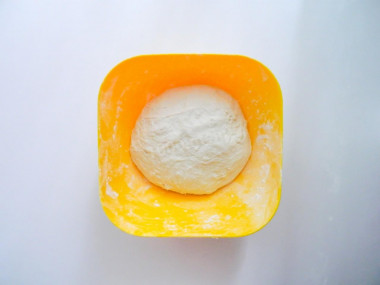
Don't "hammer" the dough with flour - it should turn out soft and tender. If flour remains, it will be useful to you when you make pies. Cover the bowl with a napkin or towel so that it does not dry and rises well. Leave in a warm place for about 1-1.5 hours.
Step 6:
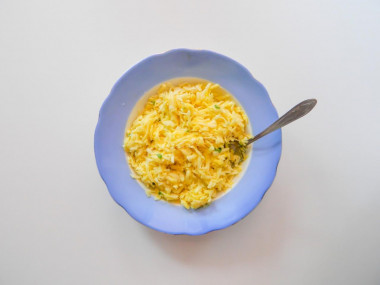
Prepare the filling. Before that, do not forget to wash the egg using a special soap and a food brush. Wash the greens and chop them. Grate the cheese on a coarse grater. Mix the cheese, egg and herbs until smooth. Add salt to taste.
Step 7:
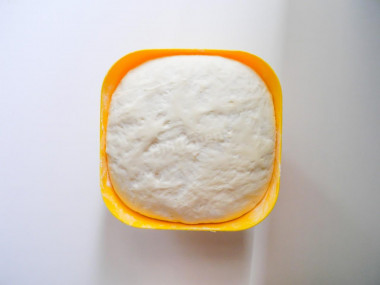
When the dough has increased 1.5-3 times in volume, it is ready and you can start working with it.
Step 8:
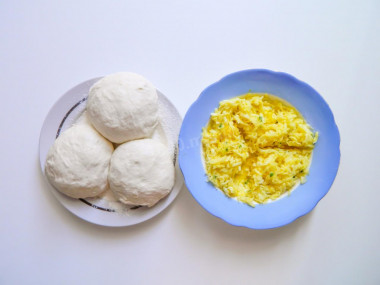
Divide the dough and filling into 3 equal parts.
Step 9:
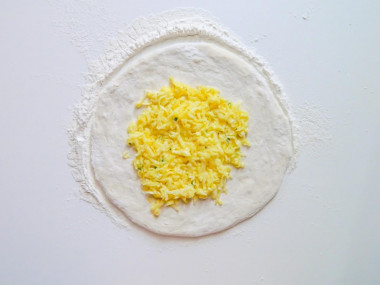
Roll out one part of the dough with your hands on a floured work surface into a round layer with a diameter of about 20 cm. Put the filling in the middle. Sprinkle your hands with flour so that the dough does not stick.
Step 10:
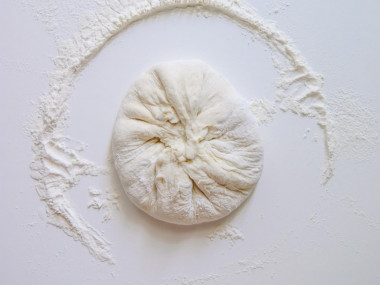
Lift the edges of the dough and pinch it well on top so that there are no holes left.
Step 11:
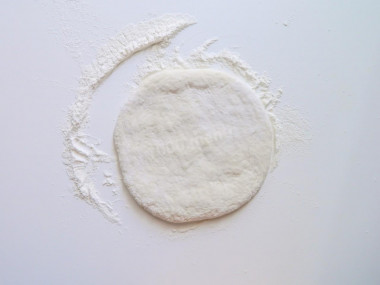
Turn the seam down. And again, carefully, so as not to tear the dough, roll out, forming a cake 1-1.5 cm thick. Make the diameter of the tortilla so that it fits in your pan and leave a small gap at the edges.
Step 12:
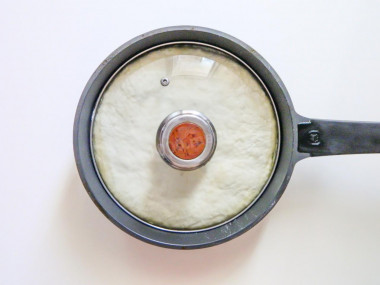
For frying, take a frying pan with a lid, with a diameter of 20-22 cm. Fry the pies on a preheated and generously greased with butter pan for 4-5 minutes on each side until golden brown.
Step 13:
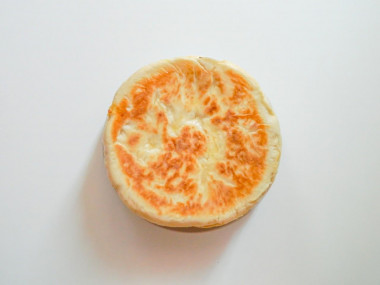
Grease the finished hot pies with butter on top. Spread them on top of each other.
Ossetian pies are served sliced into 4 or 8 pieces. They can be eaten as a separate dish, as well as used as bread.
Be prepared for the fact that you may need more or less flour than indicated in the recipe. Focus not on the amount of flour, but on the desired consistency of the dough. To avoid mistakes, read about flour and its properties!
The liquid in which yeast is bred should be pleasant to the touch, no higher than 40 degrees. Why is this important? In a warm environment, yeast is well activated, in a hot one it will die, and in a cold one it simply will not work. To avoid unpleasant surprises, check the yeast before mixing with the rest of the ingredients. Pour a little warm water into a bowl, stir in the yeast. Cover the bowl with a kitchen towel and put it in a warm place without drafts for 10-15 minutes. During this time, a foamy yeast cap should appear on the surface of the sponge. If this did not happen, then the fermentation process has not started (the yeast is overdue or spoiled). In this case, it is worth taking other yeast, otherwise baking will not work.
Caloric content of the products possible in the composition of the dish
- Whole cow's milk - 68 kcal/100g
- Milk 3.5% fat content - 64 kcal/100g
- Milk 3.2% fat content - 60 kcal/100g
- Milk 1.5% fat content - 47 kcal/100g
- Concentrated milk 7.5% fat content - 140 kcal/100g
- Milk 2.5% fat content - 54 kcal/100g
- Granulated sugar - 398 kcal/100g
- Sugar - 398 kcal/100g
- Suluguni - 290 kcal/100g
- Butter 82% - 734 kcal/100g
- Amateur unsalted butter - 709 kcal/100g
- Unsalted peasant butter - 661 kcal/100g
- Peasant salted butter - 652 kcal/100g
- Melted butter - 869 kcal/100g
- Salt - 0 kcal/100g
- Water - 0 kcal/100g
- Wheat flour - 325 kcal/100g
- Fresh frozen soup greens in a package - 41 kcal/100g
- Greenery - 41 kcal/100g
- Chicken egg - 80 kcal/100g
- Dry yeast - 410 kcal/100g

